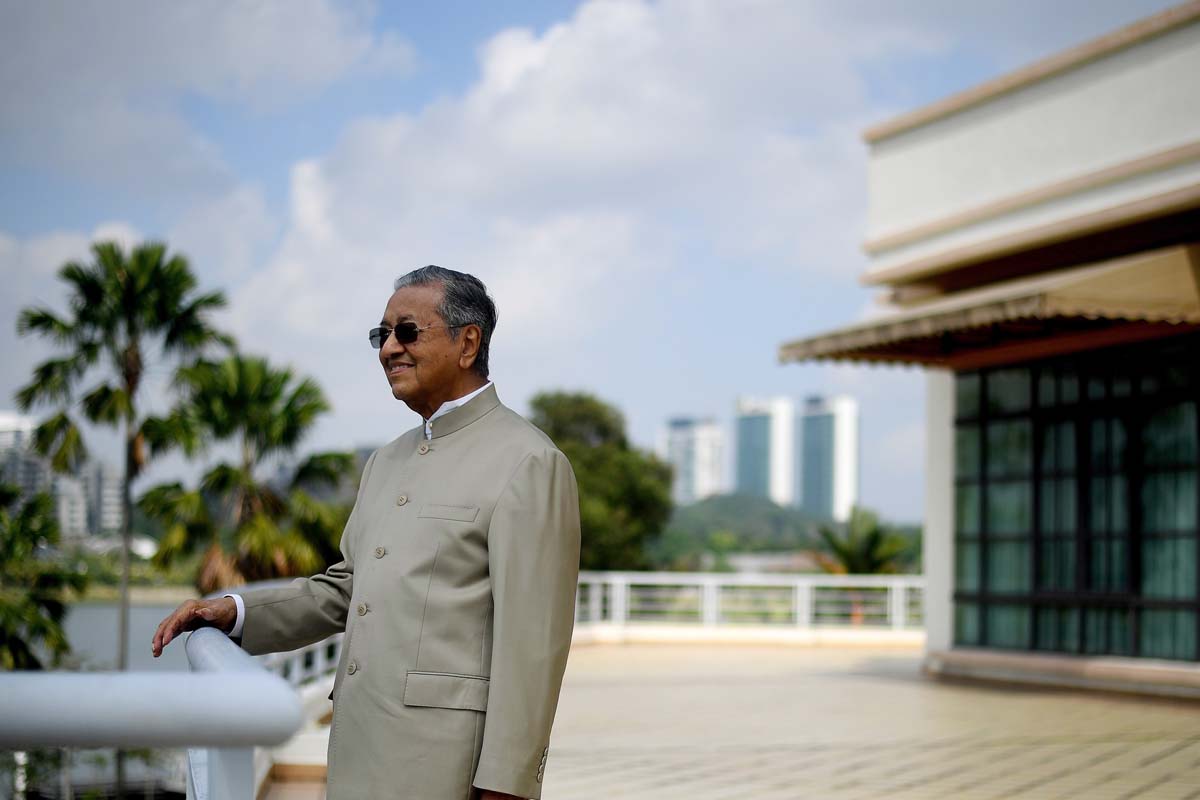Chinese President Xi Jinping already had plenty of reasons to rethink his grand plan to build railways, ports and other infrastructure across the globe. Malaysia has given him 20 billion more.
The Malaysian government’s move to cancel a China-financed high-speed rail link across the Malay Peninsula raised new questions about Xi’s so-called Belt and Road Initiative (BRI). The cabinet decided the US$20 billion project was “beyond the government’s financial capability,” Economic Affairs Minister Mohamed Azmin Ali said, previewing a move that could be formally announced by next week.
The deal’s collapse adds urgency to a debate already growing in Beijing about the potentially US$1 trillion program, the main engine of Xi’s effort to convert China’s economic might into global influence. In recent months, countries across Asia have suspended, scaled back or terminated projects amid concerns over corruption, influence-peddling and rising debt.
“We are seeing more backlash and challenges,” said Pang Zhongying, an international relations professor at Macau University of Science and Technology. “China needs to draw conclusions from its experience and absorb the lessons from the all these incidents, because the external landscape is changing rapidly and its internal economic challenges looming.”
Vanity projects
Xi will have a chance for a reset in April, when he is expected to convene leaders in Beijing for his second BRI summit. In September, the Chinese president promised African nations he wouldn’t pursue “vanity projects,” and last month the country’s top regulator of state-owned enterprises published a report calling for greater “overseas social responsibility” in investments.
The growing wariness toward Chinese largess adds another complication to Xi’s effort to manage an economic slowdown at home and a more confrontational United States (US) abroad. The Trump administration has seized on the doubts to bolster its own regional clout, with Vice President Mike Pence telling an Association of Southeast Asian Nations (ASEAN) summit in November that the US wouldn’t “offer a constricting belt or a one-way road.”
Malaysia emerged as a particular headache last year, after a scandal over embezzlement allegations at the country’s 1MDB wealth fund helped Prime Minister Mahathir Mohamad oust his one-time protege, Najib Razak. Mahathir put a series of deals under review, including the East Coast Rail link, and warned against a “new version of colonialism” during a trip to Beijing.
Scepticism about Beijing’s intentions was fed by a Wall Street Journal report earlier this month that Malaysia was investigating whether China offered to bail out 1MDB in exchange for infrastructure deals. Mahathir struck a conciliatory tone on Tuesday, saying the government’s reason for cancelling the rail was simply a lack of funds.
“Concern about its development model, Malaysia’s high debt and allegations of impropriety around 1MDB all weighed on this decision,” said Oh Ei Sun, a senior fellow at the Singapore Institute of International Affairs. Beijing was learning that its model of infrastructure-led economic growth might be difficult to export, Sun said.
Domestic politics
Chinese projects – big, disruptive and debt-dependent – inevitably get tangled in domestic politics and fiscal considerations of the countries they’re intended to help.
Nepal, for instance, cancelled and then reinstated a US$2.5 billion dam project after a series of government changes. In Pakistan, the government declined to include a pre-existing US$14 billion dam project in the broader US$62 billion China-Pakistan Economic Corridor, reportedly due to onerous financing terms.
U Thaung Tun, Myanmar’s minister of investment and foreign economic relations said the country would scale-down a US$7.5 billion plan for a deep-sea port built by CITIC Group in the town of Kyaukpyu. Thaung Tun told a news conference in the capital Naypyidaw that Myanmar didn’t want to repeat the experience of other countries and build infrastructure without sufficient demand.
“We do not have any concerns about the debt trap,” he said. “We are not going to borrow to the extent where we can’t repay.”
In a State of Southeast Asia survey released on 29 January, nearly half of respondents suggested that Xi’s Belt and Road "will bring ASEAN member states closer into China’s orbit," a finding the ASEAN Studies Centre said "may have profound implications for Southeast Asia given the region’s concern that China will become a revisionist power."
Moreover, places like Southeast Asia may have less appetite for large infrastructure projects than expected. The value of new large investment and construction projects dropped by half to US$19.2 billion in the six largest members of ASEAN last year, the lowest in four years, a Citigroup Inc. analysis found.
“China’s overarching geostrategic imperatives suggests it will be incentivised to be more sensitive to ASEAN’s pushback going forward,” Citigroup analysts said. They anticipated that China would show more interest in co-financing projects with multilateral development banks.
Xiao Gang, a former head of China’s securities watchdog, said during a speech in Washington last week that projects built solely with Chinese funds weren’t sustainable. Xiao said that China needed to ensure that more of its investments meet international standards, according to the South China Morning Post.
The criticism could also wind up strengthening the Belt and Road effort. Dane Chamorro, a senior partner at the Control Risks Group, said Beijing might decide it needs to make state-run companies meet higher standards to secure financing for overseas projects.
“There’s been a huge reputational blow for China, but don’t underestimate their ability to learn fast and change course,” Chamorro said. “BRI 2.0 won’t have anywhere near the same numbers of huge, high-profile projects as the first version and they’ll be more sustainable.” - Bloomberg
